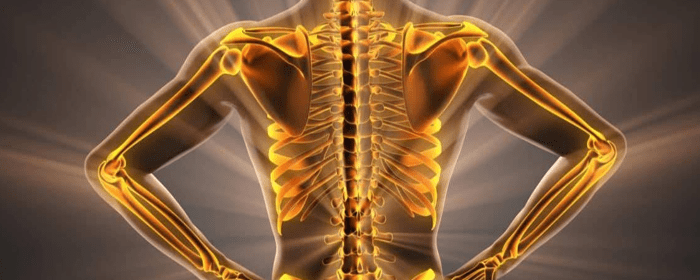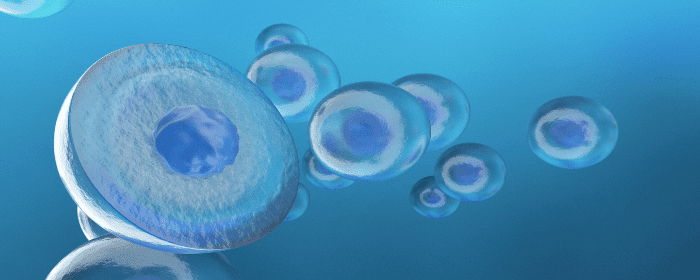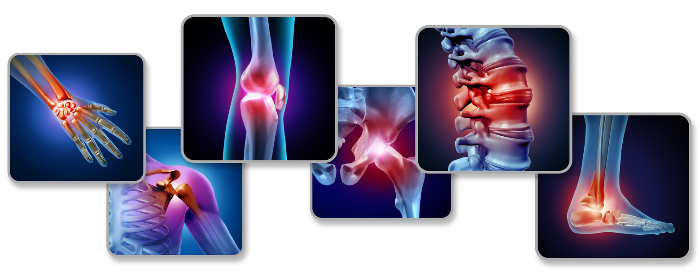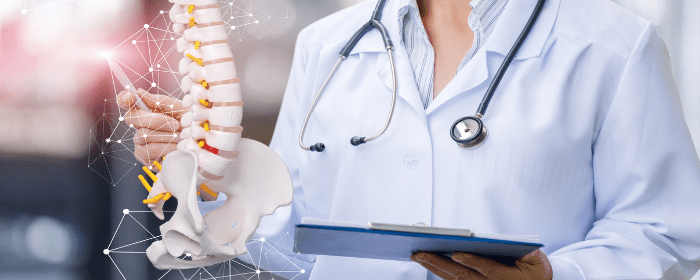
by Stemedix | Mar 11, 2024 | Musculoskeletal, Health Awareness, Regenerative Medicine, Stem Cell Research, Stem Cell Therapy
Your muscles contract and relax throughout the day. These natural muscle movements assist in musculoskeletal control, but what happens when there’s too much tension in your muscles? Extreme muscle contractions can lead to neck and shoulder pain, especially if you’re under a lot of stress. If you can feel a hard, inflamed spot in your shoulders, you may be dealing with a painful shoulder knot. Here’s what you can do to relieve that bothersome muscle tension.
Relieve Your Shoulder Knot with a Deep Tissue Massage
Massage therapists are trained in releasing tight muscle knots. If you’re dealing with a persistent shoulder knot, consider getting a deep tissue massage. It can be difficult to reach your shoulders by yourself at the depths you need, so going to a licensed massage therapist is best.
Deep tissue massages relax the deepest layers of your muscles. They may feel uncomfortable in the moment, but afterward, you’ll experience intense muscle relaxation.
Self-Massage Techniques
If you can’t get to a massage therapist, use a hard ball (like a baseball) to work the tension out of your shoulders. You can do this by placing the ball between your shoulders and a wall and pressing into the ball with your body weight.
Alternatively, you can use a vibrating massage tool to work the tension out of your shoulders. Ask a friend or partner for help if you can’t reach the knot with the instrument.
Alternate Hot and Cold to Reduce Inflammation
Tense shoulder knots are usually inflamed, which leads to redness and soreness in the area. To relieve inflammation, alternate between hot and cold exposure. Use a heating pad for 10 to 20 minutes, then replace it with an ice pack for the same amount of time.
Alternating between heat and cold reduces swelling in your body. When you apply heat, your muscles relax, and blood flows to the area. After you apply a cold compress, your blood vessels constrict, which helps relieve painful inflammation in your shoulders.
You may find that this releases the shoulder knot on its own. However, most people must try other therapies to fully get rid of tense muscle knots.
Reduce Stress and Clear Your Mind
It might sound counterproductive to focus on your mental health while you’re experiencing physical pain. However, shoulder knots often form because of stress. If you carry psychological stress in your neck and shoulders, your muscles are more likely to tense up and create knots.
Try different stress relief techniques to reduce tension and allow your muscles to fully relax. You can try a hot bath, journaling, meditation, and yoga.
Stretch Your Shoulders and Neck
As you’re doing yoga to try to relax, opt for some deep neck and shoulder stretches. Always pay attention to your comfort levels as you do this. Stretches shouldn’t hurt, although you may experience mild soreness from the shoulder knot.
Use a yoga block if you need extra support, relax your muscles, and allow the stretches to gently pull your shoulder muscles out of the painful knot.
Trigger Point Therapy
Your body has specific spots that carry muscle tension and tightness. These are called trigger points. Pressing on trigger points may relax the muscles that are creating your shoulder knot. You can visit an acupuncturist or press your trigger points yourself.
Everyone’s body is different, but there are some widely recognized trigger points along your back and neck. Pressing these may relax your shoulder muscles and get rid of the inflamed knot.
The back of your neck and several spots along your spine contain trigger points. Experiment with safe amounts of pressure to see which ones feel relaxing to your shoulder muscles. You may need a friend or partner to help you press these trigger points.
Another way to put pressure on trigger points is to use an acupressure mat. These mats contain small plastic spikes that press into your muscles and relieve tension over time. Laying on an acupressure mat can produce similar benefits to acupuncture and trigger point therapy.
Medication: Over-the-Counter Pain Relievers
If you’ve tried everything and your shoulder knot is still causing you pain, you can try over-the-counter medication. Non-steroidal anti-inflammatory drugs (NSAIDs) are affordable and work to reduce inflammation throughout your body. With less inflammation in your shoulders, you could experience blissful pain relief.
The downside to this method is that the pain relief is temporary. Once the over-the-counter medication wears off, you’ll have to take another dose to experience relief. Medication can help for short periods, but it’s best to address the underlying cause of your muscle knots to get rid of them for good.
Reduce Inflammation and Muscular Pain With Stem Cell Treatments
Sports injuries, orthopedic problems, and musculoskeletal conditions can all lead to muscle knots and pain. Stem cell therapy assists in reducing inflammation and relieving discomfort so you can experience a better quality of life.
Stem cells can form into almost any type of specialized body cell. This adaptability means they play a key role in regenerating damaged tissues, which can help people with sports injuries and other muscular problems.
If you experience chronic inflammation and pain, stem cell therapy offers a drug-free alternative for you to try. These treatments often use your own stem cells, so there’s minimal risk of adverse side effects. Alternatively, you may use donor stem cells.
Prevent and Treat Shoulder Knots and Muscle Tension
Your muscles can form knots for many different reasons. What’s important is addressing the root causes of your chronic inflammation and muscle pain.
No matter what path you choose, it’s important to reduce mental stress and keep your body healthy. Gentle physical activity can improve your mobility and reduce your chances of developing muscle knots in the future.
If at-home techniques and treatments aren’t working, you may need a more advanced solution, like regenerative medicine. Consider what works best for you and work toward a pain-free life.

by Stemedix | Nov 6, 2023 | Multiple Sclerosis, Autoimmune, Chronic Pain, Musculoskeletal, Stem Cell Research, Stem Cell Therapy, Studies
Around the world, an estimated 1.8 million people live with multiple sclerosis. This autoimmune condition is chronic and can affect your life expectancy. The right treatment options, however, may impact the outcome you can expect. Learn about multiple sclerosis life expectancy and how the latest treatments help.
Understanding Multiple Sclerosis
Multiple sclerosis is a chronic autoimmune condition in which your immune system mistakenly attacks the sheaths that surround and protect the nerves in the spinal cord and brain, called the myelin. A damaged myelin interferes with the signals your brain sends to other parts of your body.
Symptoms of multiple sclerosis include:
- Fatigue
- Muscle weakness
- Muscle spasms
- Changes in gait
- Loss of coordination or balance
- Numbness or tingling in arms or legs
The causes of multiple sclerosis vary and are not always clear. They include being exposed to certain viruses or bacteria. People who had particular infections, like Epstein-Barr exposure, are more likely to develop MS. Other causes may be your environment, genetic mutations, and even how your immune system functions.
Diagnosing Multiple Sclerosis
Getting an accurate diagnosis is one of the most crucial steps if you have multiple sclerosis. A definite test has not been developed for MS, but the symptoms you experience will lead your doctor to perform a physical exam, take blood, and get imaging tests like MRIs.
MRIs can catch any lesions in your spinal cord or brain. These lesions develop as the disease damages the myelin. Your doctor may also perform a spinal tap.
If these tests don’t offer a definite diagnosis, you may have to undergo an evoked potentials test. This test checks for nerve damage by measuring electrical activity in the spinal cord and brain.
Multiple Sclerosis Life Expectancy: Factors to Consider
Newly diagnosed patients with MS who don’t have severe disabilities have a life expectancy of 30 years or more, but lots of factors play a role in determining this number. Your unique circumstances impact life expectancy.
Disability Status
The Expanded Disability Status Scale (EDSS) is an important factor for healthcare providers attempting to provide an estimated life expectancy. The EDSS measures the level of disability in patients with MS. Everything from loss of independent ambulation to cognitive function is measured to provide the EDSS score.
Mental Health
People with MS who experience mental health concerns like depression and anxiety may have a lower life expectancy. This is because mental health significantly impacts physical health and can even worsen the symptoms of MS.
Compliance With Therapeutic Regimen
Following treatments as required impacts how the disease progresses, which then impacts your life expectancy. The type of treatment you receive is a factor.
Lifestyle Changes to Improve Life Expectancy
For many people with MS, making some lifestyle changes helps impact their life expectancy. Diet is one of the changes.
Following a healthy diet helps you manage symptoms while also improving your overall health. For MS patients, decreasing the intake of saturated fats and instead consuming omega-3 polyunsaturated fatty acids helps prevent myelin loss in the central nervous system.
Adding stress management techniques to your life is another change you can make. Stress makes MS symptoms worse. Trying breathing exercises, meditation, or turning to a therapist. These strategies can all improve your stress levels and impact your overall health.
You also want to add physical exercise to your routine. Physical exercise may help slow down disease progression. Aerobic exercise may be able to decrease inflammation. It can also aid in decreasing depression and other mental health concerns that are a result of MS.
Staying at a healthy weight is also vital for increasing life expectancy. People with MS have a higher risk of malnutrition, and they are more prone to being both underweight and overweight. Adding exercise to your day and improving your food choices will help you correct any nutritional issues you have, leading to better overall health.
Getting better sleep is another important change you can make, as well as quitting any form of nicotine you may use. Smoking increases inflammation, which can make MS symptoms worse.
How Regenerative Medicine Can Help
For people with MS, one promising treatment option is regenerative treatments like stem cell therapy. More people are turning to stem cell therapy because it may be able to decrease inflammation and improve symptoms with minimally invasive measures.
Stem cell therapy uses stem cells, which are the cells that differentiate into the many types of cells in the body. For multiple sclerosis, mesenchymal stem cells are particularly useful because of their ability to repair myelin. They may also have a positive impact on the immune system.
For this type of treatment, your healthcare provider removes stem cells from your bone marrow or fat, preparing them for an injection to reintroduce them into the body. Stem cell therapy is a great option for those searching for minimally invasive treatments that don’t require a long recovery process.
Stem cell therapy gets right to the cause of MS symptoms: the damage of myelin. Unlike other treatment options, studies have shown that regenerative medicine has the potential to help with symptom management, slowing down progression, and provide a better quality of life.
It is also a treatment option that may be less likely to cause side effects because the stem cells usually come from your body.
Living With Multiple Sclerosis
Getting a diagnosis of multiple sclerosis can be stressful, but it’s crucial to know that many people with the condition live full and happy lives. Advances in medicine have made it easier than ever to extend your life expectancy with conditions like multiple sclerosis, especially if you receive an early diagnosis.
Stem cell therapy and other forms of regenerative medicine work to offer you the help you need while targeting the cause of the disease. By combining stem cell therapy with lifestyle changes like exercising and eating better, you may be giving your body the ability to slow down the disease’s progression while improving your overall health.

by admin | Mar 24, 2023 | Uncategorized, Health Awareness, Musculoskeletal, Osteoarthritis
Your bones are essential for providing your body with support and stability, especially as you age. When you get older, you are more susceptible to conditions that can weaken bones and make them more prone to breakage.
Keeping your bones healthy throughout your life will strengthen them in old age and make you less likely to develop conditions like osteoporosis. Take a look at these tips for healthier bones.
Increase Calcium Intake
One of the best ways to strengthen your bones is to increase your calcium intake. Many people are deficient in calcium, and it puts them at a higher risk of osteoporosis and other conditions that weaken bones. You can increase your calcium intake by adding more whole milk, yogurt, and calcium supplements to your diet.
Stay Active
You don’t need to perform strenuous exercises or intense workouts. A daily walk, swimming, or even playing golf are all good ways to remain physically active.
People who lead a sedentary lifestyle tend to have weaker bones than those who get regular exercise. To strengthen your bones and reduce the risk of osteoporosis, you should strive to stay active throughout your whole life.
Quit Smoking
Research has suggested that smoking cigarettes can increase your risk of bone breakage or developing osteoporosis. To help yourself maintain strong, healthy bones, it’s better to quit smoking as soon as possible.
Decrease Alcohol Consumption
In addition to tobacco products, alcohol can increase your risk of developing osteoporosis. For stronger, healthier bones, you should try to keep your drinking to a minimum.
Keep Hormones in Check
Some instances of weak bones and osteoporosis are linked to hormone imbalances. Getting your hormone levels regularly checked and ruling out thyroid conditions can help you keep strong bones for your entire life.

by admin | Apr 1, 2022 | Stem Cell Therapy, Adipose, Mesenchymal Stem Cells, Musculoskeletal, Wharton's Jelly
Articular cartilage, found on the surface of most musculoskeletal joints, distributes and transfers forces between bones and joints, provides a smooth surface for joint mobility, and plays an important role in human mobility.
However, articular cartilage is also easily susceptible to damage, but difficult to repair itself on its own (primarily due to the fact it is mostly avascular). Over time, the inability of articular cartilage to repair itself leads to progressive joint pain, disfigurement, movement disorders, and ultimately osteoarthritis.
The CDC estimates that nearly 33 million Americans are currently affected by osteoarthritis, most often in the form of pain, stiffness, decreased mobility and range of motion, and swelling in the joints[1].
Current treatment methods, including microfracture technology, autologous or allogeneic cartilage transplantation, and autologous chondrocyte implantation (ACI) have demonstrated the ability to repair and regenerate fibrous cartilage, but not articular cartilage required for smooth, fluid, natural mobility.
To address this issue, recent research has focused on the efficacy of stem cells, and specifically mesenchymal stem cells (MSCs) found in bone marrow, adipose tissue, synovial membrane, and umbilical cord Wharton’s jelly, as potential therapeutic treatments for regeneration of articular cartilage. MSCs are particularly of interest due to their demonstrated abilities of self-renewal, multi-differentiation, and immunoregulation.
While the use of MSCs has demonstrated tremendous potential in the field of regenerative therapy, one notable drawback continues to be unstable or suboptimal results resulting from the heterogeneity of various mesenchymal stem cells.
Specifically, the stability and efficacy of MSCs appear to differ based on a number of factors, including the donor, the tissue source, and their ability for proliferation, differentiation, and immunoregulation.
For example, some of the key heterological differences highlighted in this review include the efficacy of MSCs based on donor’s age (with younger donors providing higher quality MSCs), Wharton’s Jelly MSCs showing greater prospects for application in cartilage regeneration than other MSCs, and differences within specific MSC subpopulations.
The authors of this review acknowledge the potential of MSCs in repairing arterial cartilage, but also point out that there needs to be a deeper understanding of the heterogeneity of various MSCs in order to improve the efficiency of MSC-based therapies designed to repair arterial cartilage. In addition, the authors also call for greater standardization in MSC isolation and harvesting methods among laboratories in order to provide better consistency with respect to results obtained from studies using MSCs.
Source: “Heterogeneity of mesenchymal stem cells in cartilage regeneration.” 19 Mar. 2021, https://www.nature.com/articles/s41536-021-00122-6?elqTrackId=5517bd20493b470cb34fd0e8bc1f6ef9.
[1] “Osteoarthritis (OA) | Arthritis | CDC.” https://www.cdc.gov/arthritis/basics/osteoarthritis.htm.

by admin | May 7, 2021 | Stem Cell Therapy, Mesenchymal Stem Cells, Musculoskeletal
Research exploring the benefits of mesenchymal stem cells (MSCs) has demonstrated tremendous potential as a regenerative therapy option for the musculoskeletal system. Research into these cell-based regenerative therapies is promising, and they must continue to provide the data necessary to show their therapeutic potential in clinical settings.
In this review, Steinert et al. review and summarize some of the promising and unique therapeutic features of adult MSCs, detail their current state of clinical application as a regenerative musculoskeletal therapy, and describe the potential for future developments in this field.
Specifically, as a part of this review, the authors share the status of 31 clinical cell therapies for musculoskeletal regeneration occurring between 1996 through 2011 and specifically covering bone defects and nonunions, avascular necrosis of the hip, cysts and benign tumors of the bone, cartilage lesions, and tendons and ligaments; results for the majority demonstrate the safety of and/or the efficacy associated with the specific method of cell-delivery being evaluated.
The field of regenerative orthopedics points to the large body of MSC clinical research indicating the successful treatment of myocardial infarction, post-stroke or spinal cord injury nerve regeneration, graft versus host disease, and a variety of other conditions as an indication that the application has tremendous potential as a regenerative therapeutic option in a wide variety of musculoskeletal indications.
Although there appears to be evidence demonstrating the paracrine and trophic functions of MSCs, research explaining the specifically demonstrated therapeutic effects is still being determined. The authors highlight that research continues to explore the reasonable therapeutic expectations associated with MSC-based treatments, an essential step required to fully understand the range of healing associated with musculoskeletal regenerative cell-based therapy.
The authors, in concluding this review, point out that the demand for MSC-based musculoskeletal regenerative therapies continues to increase. Steinert et al. call for further study into the specific combination of cell preparation, bioactive factors, and stimuli for each specific MSC therapeutic application. Once these have been demonstrated for each application and should they demonstrate better or improved outcomes compared to standard treatments, only then can they be considered for long-term clinical application.
Source: (n.d.). Concise review: the clinical application of mesenchymal stem cells …. Retrieved from https://pubmed.ncbi.nlm.nih.gov/23197783/

by admin | Mar 5, 2021 | Stem Cell Therapy, Degenerative Disc Disease, Musculoskeletal, Spinal Cord Injury, Stem Cell Research
Recent breakthroughs in the field of regenerative medicine continue to support the tremendous healing potential of stem cell therapy. Until a few years ago, stem cell research was limited to only what could be gathered from the research gathered from embryonic stem cells; this research was limited by the well-documented ethical concerns surrounding the practice of harvesting stem cells from embryonic sources.
Fortunately, alternative – and less controversial – sources of stem cells, harvested primarily from autologous bone marrow and adipose tissue have demonstrated promise in treating many diseases ranging from autoimmune conditions to myocardial infarctions.
Considering this, the ability of adult stem cells to undergo division and multipotent differentiation has garnered the attention of spinal surgeons and specialists around the world, specifically for the potential benefits of these stem cells in the treatment of a variety of spine issues related to neural damage, muscle trauma, disk degeneration as well as it potential in supporting bone and spine fusion.
Stem Cells in Spine Surgery
Although the rate of spinal surgery, and specifically lumbar, cervical and thoracolumbar fusions, has continued to rapidly increase over the last 20 year, there has not yet been a breakthrough in surgical technology that has consistently demonstrated the ability to reduce reoperation rates associated with these procedures; additionally, these procedures have demonstrated little success in reducing the issue of pseudoarthrosis in patients.
As a result, spinal surgeons have begun experimenting with using stem cells to support the process of bone growth and fusion. As stem cell research continued to evolve, the discoveries of the ability of mesenchymal stem cells (MSCs) harvested from bone marrow, adipose tissue, and skeletal muscle differentiate when cultivated in the correct microenvironment has led to the realization that these stem cells demonstrated a significant effect of the process of spinal fusion.
Adding to the potential benefits of these stem cells are several animal model studies confirming the benefits of the much more available, and much easier harvested adipose-derived stem cell (ADSC). In fact, several of these animal studies have confirmed similar fusion results observed when comparing MSCs and ADSCs.
Stem Cells in Disc Regeneration
Changes occurring in the discs of the spine and specifically starting in the second decade of life, contribute to decreased disc height that contributes to the impingement of nerves and the development of lower back pain consistent with Degenerative Disc Disease.
Until recently, treatment of Degenerative Disc Disease was limited to conservative management techniques, including work and lifestyle modifications, physical therapy, medication, and epidural injections, or surgery in the form of disc replacement or spinal fusion.
Although realizing the actual effects of stem cells therapy for treating this condition has been limited in humans (primarily due to concerns associated with the potential for an immune reaction to allogeneic stem cells in humans), several animal studies have demonstrated decreased disc degeneration as well as significant improvement in height and hydration of previously damaged discs. In addition, small-scale studies in humans have demonstrated improvements in pain and disability within three months of stem cell treatment.
Considering this, Schroeder J et al. call for larger clinical trials designed to further explore the benefits associated with using stem cell therapy to treat Degenerative Disc Disease.
Stem Cells in Treatment of Spinal Cord Injury (SCI)
Spinal Cord Injury (SCI) resulting from damage to the spinal cord most often is the result of motor vehicle accidents, falls, or injuries occurring during sports, work, or in the home; currently, the World Health Organization (WHO) estimates that worldwide between 250,000 and 500,000 people suffer an SCI each year[1].
SCIs range in severity, but most often are accompanied by some degree of tissue damage and/or cell death. As a result, spine surgeons have been exploring the potential of stem cell transplantation with the hope of supporting functional recovery after an SCI is sustained.
There are several phases associated with SCI. Regardless of the specific phase associated with an SCI, scientists have realized that creating a microenvironment that enhances neuron and axon regeneration appears to be the most desirable outcome of stem cell therapy. It is hypothesized that this is best achieved by suppression of the inflammation that typically accompanies cell apoptosis and necrosis.
Although embryonic stem cells appear to provide greater differentiation than adult stem cells, the ethical concerns surrounding their use have limited further exploration of these potential benefits. However, to date, adult mesenchymal stem cells (MSCs) used in the treatment of SCI have not demonstrated immunologic reactions and have demonstrated the potential to promote axonal regeneration, suppress demyelination, induce nerve regeneration, and induce nerve regeneration.
Unfortunately, the in vivo differentiation of MSCs into neuron-like cells has been documented to be inefficient, meaning that MSCS is currently not capable of directly repopulating or physically restoring the tissue damaged in SCI.
While there have since been studies exploring the transplantation of neural stem cells (NSC) that have demonstrated sensory and motor improvements after stem cell transplantation and when combined with other cell and growth factors, these improvements were not statistically significant. Considering this, the authors of this study indicate that it’s difficult to provide a definitive statement on the clinical potential of stem cell therapy for the treatment of SCI.
In conclusion, the authors point out that there are additional areas, including iatrogenic nerve and muscle injury resulting from spinal surgery, that have not yet been clinically addressed. The authors also point out that greater standardization of in vitro experimentation and animal models may aid in the speed of translation of stem cell therapy in spinal surgery.
Source: (n.d.). Stem cells for spine surgery – NCBI – NIH. Retrieved from https://www.ncbi.nlm.nih.gov/pmc/articles/PMC4300930/
[1] “sheets/detail/spinal-cord-injury – WHO | World Health Organization.” 19 Nov. 2013, https://www.who.int/news-room/fact-sheets/detail/spinal-cord-injury.







 St. Petersburg, Florida
St. Petersburg, Florida
